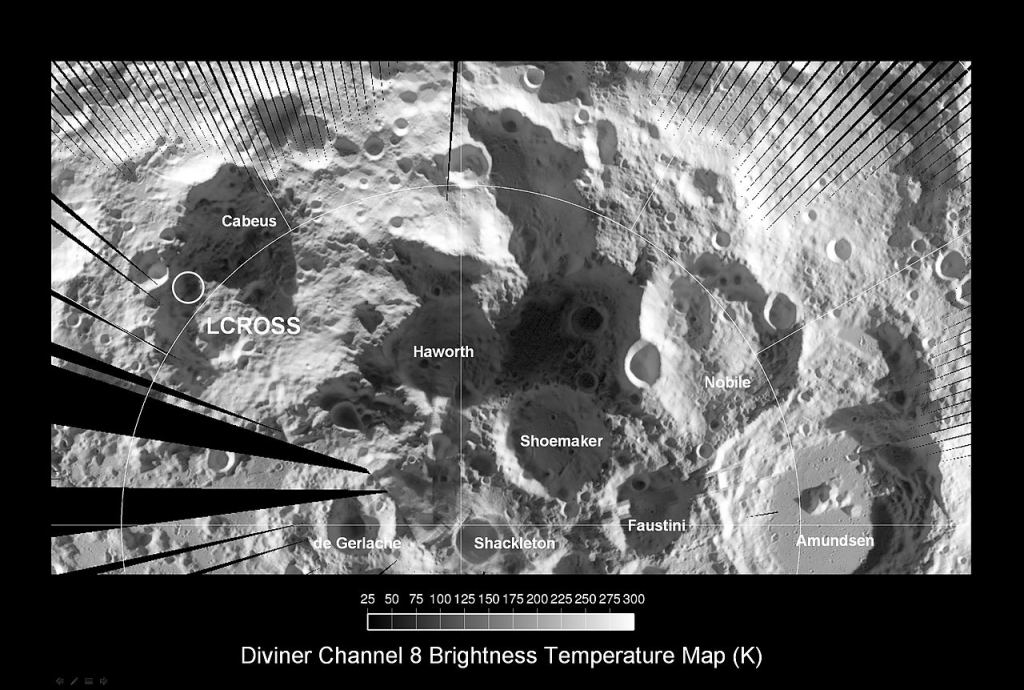NASA’s VIPER Rover Will Hunt for Water Near Nobile Crater at Moon’s South Pole
NASA says its VIPER rover will head for the western edge of Nobile Crater near the moon’s south pole in 2023, targeting a region where shadowed craters are cold enough for water ice to exist, but where enough of the sun’s rays reach to keep the solar-powered robot going.
Today’s announcement provides a focus for a mission that’s meant to blaze a trail for Artemis astronauts who are scheduled to land on the lunar surface by as early as 2024, and for a sustainable lunar settlement that could take shape by the end of the decade.
“Once it’s on the surface, it will search for ice and other resources on and below the lunar surface that could one day be used and harvested for long-term human exploration of the moon,” Lori Glaze, director of the planetary science division at NASA’s Science Mission Directorate, said during a teleconference.
Scientists say that cometary impacts have deposited millions of tons of water ice in the lunar soil over the course of billions of years, with much of that ice persisting in permanently shadowed regions of the moon’s craters near the poles. Theoretically, that frozen H2O could be extracted and converted into drinkable water and breathable oxygen as well as hydrogen for powering a lunar base and refueling rockets.
VIPER — which stands for Volatiles Investigating Polar Exploration Rover — is expected to provide ground truth for the scientists’ suspicions and give engineers the data they need to design water extraction systems.
The golf-cart-sized rover is due to be sent to the moon by a SpaceX Falcon Heavy rocket in late 2023, as the primary payload on Astrobotic’s Griffin robotic lunar lander. The mission is managed by NASA’s Ames Research Center, with a mission lifecycle cost of $433.5 million. The $199.5 million cost of delivering VIPER to the moon is covered by NASA’s Commercial Lunar Payload Services program.
Hunting water isn’t VIPER’s only objective: The mission is also aimed at providing scientists around the world with “further insight into our moon’s cosmic origin, evolution and history,” Thomas Zurbuchen, NASA’s associate administrator for science, said in a news release.
The choice of VIPER’s landing spot comes more than a year after the mission was announced. Mission managers and scientists at NASA Ames considered four finalist sites, Glaze said. Nobile Crater was judged the top prospect, based on an analysis of visibility for Earth-to-moon communications, the availability of sunlight for the solar panels, and access to shadowed regions where water ice might be detected.

VIPER is expected to traverse about 10 to 15 miles of the surface around the edge of Nobile Crater, and analyze samples at six or more study sites during its 100-day mission. The rover should be able to dip into small craters surrounding Nobile’s perimeter. It’ll be equipped with a suite of spectrometers and cameras, plus a drill capable of penetrating the lunar surface to a depth of several feet.
Anthony Colaprete, VIPER’s lead project scientist, said the rover’s target site is a place where the sun “just peeks itself over the horizon 5 degrees or so constantly [and] creates shadows that literally run hundreds of miles long.”
“It’s going to be something that is truly out of this world,” he said. “As these shadows move and dance as we orbit the sun, opportunities for traversing the moon present themselves through corridors of light and shadow. It’s these corridors of light and shadow that VIPER rover will traverse to conduct its scientific investigations. … We will visit several permanently shadowed craters — craters that have not seen sunlight for billions of years to investigate inside those craters.”
VIPER’s mass spectrometer should be able to detect water to a sensitivity in the range of tens of parts per million, well below 0.1% by weight, Colaprete said.
If all goes as planned, VIPER’s readings should produce the first comprehensive map that conclusively shows the distribution of water and other volatile compounds on the moon. Such a map could well serve as a template for future guides to be consulted by astronauts exploring the moon, Mars and other off-Earth destinations.
And if VIPER determines that the water ice everyone expects to find on the moon doesn’t exist? “Oh, I don’t think I want to place those odds at this time,” Colaprete said in response to a reporter’s question. But he went on to consider the possibility.
“If we find that there’s no water in any place we look, that is a fundamental discovery, and we will be scratching our heads and rewriting textbooks again,” he said, “because it’s just not something that we would expect.”
NASA’s moon exploration activities, and the VIPER mission in particular, will be the focus of a Reddit Ask Me Anything session at 4 p.m. EDT (20:00 UT) Tuesday, Sept. 21.
Lead image: A data visualization shows the mountainous area west of Nobile Crater and the smaller craters that litter its rim at the lunar south pole. The region includes permanently shadowed areas where subsurface water ice could persist, as well as sunlit areas that would make it possible to power the VIPER rover. Source: NASA
The post NASA’s VIPER Rover Will Hunt for Water Near Nobile Crater at Moon’s South Pole appeared first on Universe Today.
Universe Today
Go to Source